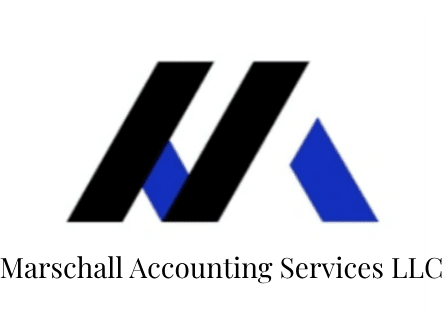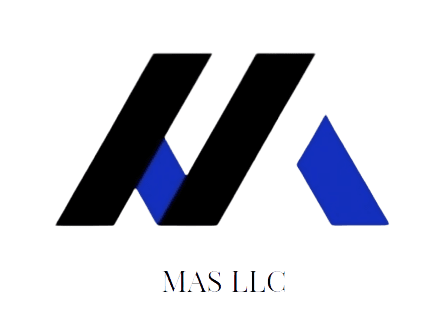Article: Small Business Accounting and Tax Practices—Pitfalls to avoid
Category: 1040 Income Tax

Small Business Accounting and Tax Practices—or what pitfalls to avoid
May 21st, 2020
Jessica I. Marschall, CEO, Marschall Accounting Services LLC
Over the past nineteen years of being a CPA providing tax consultation services to small businesses, I have seen the good, the bad and the ugly. Tax documents provide insight into the financial soul of the business and the owner. I hope to share insights into what small businesses should do and what they must avoid doing to dodge common pitfalls.
We face highly uncertain economic times. We face a virus that can cause serious illness and death. This is scary but we must proactively plan and not irrationally react. Businesses must take time to shore up accounting and financial practices. This will result in the production of more accurate and useful reports and KBIs, ensure internal controls are in place, eliminate irregular (or some would call illegal) practices, and be prepared with a paper trail, should their business come under IRS scrutiny. Yes, the only two certainties in life are death and taxes and we are living in an economy undertaking unprecedented spending. These debts must be repaid. Tax rates will probably rise and taxpayers should be absolutely sure their financial house is in order.
Here are the fifteen most common issues I have encountered with my clients over the years—applying across all small business industries.
1: Refusing to Hire an Accountant or Bookkeeper
Some clients attempt to run accounting software with zero oversight from an accounting professional. Their chart of accounts is either 500 accounts long, breaking out office supplies into separate accounts for staples, toilet paper, coffee pods and paperclips, or way too general, like having an account called “Business Expenses” that captures legal, office supplies, software, taxes and license fees. When reports are run, they do not offer useful information that can lead to better financial decisions. All accounting software is run using the underlying double-entry accounting system taught in Accounting 101. If a business owner does not understand how to journal your way out of an erroneous expense or break out a loan payment between a P&L account (interest) and a Balance Sheet account (liability) then you need to hire monthly help. Most CPAs do not do monthly bookkeeping but a few of us will do a review for tax consultation clients. Find a good bookkeeper and keep them on staff. Most likely, the funds paid to them will be far less when compared to the time spent by the business owner wading through double-entry accounting from scratch.
2: Accounts Receivable
Your receivables are the life-blood of the business. The business owner and bookkeeper’s first duty every morning should be to check on receivables. Invoices should be sent out immediately when work commences. Aging of receivables should be reviewed and written off to bad debt when they climb past 90 days with no payments in sight. To avoid these write-offs, examine your invoicing terms and strike the right balance between trusting a customer enough to offer them a few weeks to pay vs. collecting payments immediately when services are rendered. I tend to veer towards the latter with most clients as a best-practice.
3: Accounts Payable
Relationships with vendors are critical to many small business owners. Do not tick off the vendors upon which you rely for products and services by stiffing them, paying them late or remitting partial payments for no good reason. If you cannot pay a vendor, call and explain the situation. Oftentimes, these calls are all it takes to restore or keep a good relationship going. Everyone appreciates transparency. We also live in a digital world. Do not claim lack of funds to pay your supplier then post pictures on Instagram of yourself in Vegas at a $300 steak dinner and gambling all night.
4: Comingling Business and Personal Expenses
This is perhaps the #1 issue among small business owners: comingling business and personal expenses from the same bank or credit card accounts. The IRS frowns upon this. It creates an audit nightmare if a business owner has been using their business bank account to pay vendors and office expenses but also college tuition and groceries. Open a separate bank account and credit card for your business. There will occasionally be a slip up where the business card was used for a personal charge. Classify it as an owner’s draw in your accounting software and try not to make the mistake again. If a client’s tax return goes up for audit and they must defend their expenses, the IRS will review all transactions. If they find comingling and can determine that a personal expense was wrongly classified as a business expense, they can go back and assume many other transactions were personal and not business. If you need money from your business account to pay personal bills, write a check or transfer from the business account to the personal account. These relatively easy steps can save hours, days, weeks of audit headaches and money and ensure accurate accounting.
5: Writing Paper Checks
Paper checks are highly inefficient. Move expenses to autopay or remit electronic checks directly from your bank’s webpage. If your business bank does not have this feature, switch banks. Period.
6: Invoice Function
We discussed accounts receivable issues in #2, now let us discuss invoicing. Take the time to program invoicing software to allow for quick and accurate invoicing. Ensure each invoice is reviewed at least twice before sending. There is nothing worse than sending an invoice to a customer where you dropped a 0 and they happily pay you $300 instead of $3,000. It requires an uncomfortable follow-up invoice that makes the business owner look very disorganized. We all make mistakes but doing a double check of all invoices against the original contract terms, customer list and amount is critical.
7: Separation of Duties
To avoid being fleeced, do not allow the same employee to receive payments from customers and remit payments to vendors without an oversight function. This is how approximately 90% of the thefts I have caught occurred. Of that 90%, over half were by employees who were trusted individuals like family members or personal friends. Most often, the employee creates a fictitious vendor (themselves) and makes payments that fly under the radar. Have procedures for a second set of eyes for all incoming funds and outgoing payments and let the employees know this is in their best interest as well as the owner’s.
8: Hiring Family Members or Friends
As mentioned above, family and friends are often the culprit in theft, either petty or grand. Another negative aspect of hiring family members and friends is that it is difficult to terminate their employment. Before you hire a family member or friend, assume that you will be ok with a changed relationship should you need to terminate their employment. In a different vein, do notcreate fictitious employees who are family members, friends, girlfriends of boyfriends who are claimed to be employees of a company to skirt gift tax limitations. A payroll audit will quickly uncover this when an interview is conducted of all employees and that fictitious employee must explain what work they perform during every 80-week pay period.
9: Pass-Through Entities and Taking Cash Out of a Business
This is an extremely common area of misunderstanding: If you are a pass-through entity (sole-prop, LLC, partnership, S-Corp) you are taxed on every dollar of net taxable income whether you leave the money in or out of the company. Some clients run up high personal credit card debt to pay for personal expenses and leave tens of thousands in their business account because they do not want to be taxed on it. They will be taxed on it and they will also pay high interest rates on the credit cards. Once monthly payroll and expense obligations are met, transfer additional funds to a personal account if you need the money.
10: Payroll and Sales Tax: Outsource!
Most CPAs will not touch payroll or sales tax. This is mostly due to the fact that screwing up payroll or sales tax can pierce the corporate veil of an otherwise protected company if liabilities are not remitted accurately and on time. There are fantastic payroll providers who can ensure payroll is run accurately and all quarterly and annual reports are filed on time. The liability rests on themand not on the business owner. If a business owner pays their own sales tax, ensure it is remitted immediately. The tax never belonged to the business owner and there are serious repercussions if those funds are spent and not remitted to the correct taxing authority…and speaking of that authority…In the advent of online sales across multiple localities and states, Nexus rules are complicated. Outsource! If recommendations are needed for the best payroll and sales tax companies, email me and I will provide them.
11: Accept Online Payments
Business owners are often frustrated by merchant service fees and, consequently, do not allow for online click-and-pay invoice features. I can attest that accounts receivable aging reduces drastically when businesses allow for online invoice payment and take credit cards. The 2-3% paid to the merchant service provider is well worth the receipt of funds sooner rather than later…or never. Also, make merchant services compete for your business and shop around before you sign-up for a vendor.
12: Carrying Credit Card Balances
Business credit cards are fantastic. In fact, every business owner should have a cash-back card. Not using a cash-back card is leaving money on the table. However, the cash-back savings for a year are often wiped out by a single month of carrying a balance. Get the cards but only use them if you can pay back 100% at month-end. If credit card debt has crept up and appears insurmountable, reach out to a trusted lender about a loan for debt consolidation. Sometimes clients will tell me they are adverse to a business loan but they are carrying tens of thousands on credit cards in the 14%-18% interest range. Again, contact me and I will share my go-to small business bankers.
13: 1099 vs W2 or the Proverbial Duck
The IRS is seriously cracking down on the abuses by some businesses in classifying what should be employees as contractors to avoid the headache and expense of the payroll and unemployment taxes. If the business owner has complete control over the person’s work, makes their schedule, provides their equipment and tools and the business is close to the only company for which the person works, they should be a w-2 employee not a 1099 contractor. If they look like, quack like and walk like a duck, the IRS will declare them a w-2 duck and assess penalties for the misclassification.
14: Self-Employment Taxes—No You are Not Being Fleeced
Pass-through entities (sole props, LLCs and S-Corps) pay their payroll taxes through their personal income tax return, the 1040. This is labelled as self-employment tax and it drives clients insane to see this additional tax entry on their 1040. W-2 employees pay 6.2% Social Security tax on earnings for up to $132,900 of their w-2 income in 2019. They also pay 1.45% for Medicare with an additional .9% for higher wage earners. However, because w-2 employees never see these funds in the first place, they do not feel the taxes, per se. Additionally, the employer pays the other half: 6.2% Social Security and 1.45% Medicare taxes. Self-employed individuals pay 15.3% self-employment taxes in full. They are added on to the other federal taxes owed by the taxpayer. There is a deduction of one-half the self-employment taxes from net income, which does not calculate into a dollar-for-dollar deduction but it is still a break. Plus, most small business owners within a specific income range and not part of a Specialized Service Trade or Business (SSTB, of which accountants are included!) can deduct 20% of their net income from business much like the standard or itemized deduction called the Qualified Business Income (QBI) deduction. Yes, paying self-employment tax is irritating when it is added onto the total tax bill but it is not that far out of line compared to what w-2 employees pay and the small business owner has numerous tax breaks unavailable to the w-2 employee: home office deduction, business mileage allowance, Special Depreciation Allowance for asset purchases along with Section 179 depreciation treatment, interest expense write-off…just to name a few. Beyond the scope of this article, consider electing taxation as an S-Corp due to the wage and pass-through (without self-employment tax!) element, but make sure you fully understand the tax and reporting requirements of an S-Corp and the Reasonable Compensation requirements. Finally, pay estimated federal and state taxes. We are on a pay-as-you-go tax system and estimated tax payments are required. Review taxable income each quarter, multiply that by your effective tax rate for federal and state and remit the estimated taxes to the IRS and state taxing authority (if your state has an income tax.) The goal is to get as close to $0 on the 1040 and state income tax. Getting a refund is nota good thing. You lent the government that money, interest free for up to 15 ½ months.
15: Stay in Your Lane!
I have a MS in Accounting and passed the CPA exam. However, I cannot write computer code, put together a decent outfit, decorate a home, read an architectural elevation and currently have a broken windshield wiper that I have no idea how to replace. We all specialize and perform in our area well. Carefully outsource or hire the financial minds needed to keep the company financials on track.
Please email with questions:




